巻号一覧

19 巻 (1978)
- 4 号 p. 261-
- 3 号 p. 211-
- 2 号 p. 157-
- 1 号 p. 1-
19 巻, 2 号
選択された号の論文の4件中1~4を表示しています
- |<
- <
- 1
- >
- >|
-
永渕 正昭1978 年 19 巻 2 号 p. 157-163
発行日: 1978/04/15
公開日: 2010/06/22
ジャーナル フリーThe purpose of the present study was to compare vocal rhythms of normal persons, including children, the young and the old, with those of persons having speech defects, including the mentally retarded, stutterers and aphasics. Each subject phonated /a/ with 4-2 rhythm under DAF condition (delay time; 50-500 msec) . The phonated sound was recorded in tape and analysed with respect to phonation time and rhythm change.
As for normal subjects, the young could phonate /a/ most rhythmically, less influenced by DAF, on the contrary the children's phonations were rremarkably affected by DAF. The old's phonation patterns were a little influenced by DAF.
The phonation patterns of aphasics were similar to those of the old, and the patterns of the mentally retarded showed those of normal children. However, the stutterers' phonations were greatly influenced by DAF.
DAF-effect was the greatest under delay time 300 msec for all subject-groups, normal and abnormal.抄録全体を表示PDF形式でダウンロード (758K) -
鈴木 重忠, 能登谷 晶子1978 年 19 巻 2 号 p. 164-173
発行日: 1978/04/15
公開日: 2010/06/22
ジャーナル フリーPure word deafness is a type of auditory agnosia characterized by a selected disturbance of speech sound in auditory discrimination.
We have followed the clinical course of the girl with pure word deafness whose lesion has occurred surmiseddly at the latter half of 3-years old. Her speech and auditory disturbance were reported, and we discussed the difference between diagnosis of pure word deafness and other auditory disturbance The conclusions, were as follows:
1. The results of a pure-tone audiometry test (PTA) and BSR test showed normal thresholds. She could not repeat speech sounds. Repetition of several animals' sounds and melody were almost correct. Deterioration of her articulation became gradually remarkable. We consider this fact as one of the features of childhood pure word deafness. The thresholds for the PTA fluctuated. Hyperactivity and lip reading were observed in her daily behavior. CT scanning showed a slight atrophy in the left temporal lobe. EEG revealed irregular traces on the bila-teral temporal lobes.
2. We emphasized the need to distinguish pure word deafness from peripheral hearing disorders and Wernicke Aphasia.
3. We suggested that the recognition of speech sound patterns is disturbed in pure word dea-fness.
4. Changes of character, abnormal EEG, disorder of sound localization were not considered significant features of childhood pure word deafness.
5. In this case, the prognosis for speech training was poor, therefore, a language therapy using visual method was seemed preferable.抄録全体を表示PDF形式でダウンロード (3672K) -
福迫 陽子, 笹沼 澄子1978 年 19 巻 2 号 p. 174-189
発行日: 1978/04/15
公開日: 2010/06/22
ジャーナル フリーThe purpose of the present investigation was to construct a short test of aphasia on the basis of factor analysis and to examine its clinical usefulness.
As a first step, we performed the factor analysis of the test scores obtained from the administration of the long test to 180 consecutive patients, which resulted in the identification of the following factors; F1: Word Comprehension, F2: Language Behavior, F3: Phonological Processing, F4: Motor Functions of Speech Organs, F5: Visuomotor Ability, F6: Numerical Concept, F7: Calculation, and F8: Fluency.
Secondly, in accordance with the rules of reducing the size of a test battery without transforming the factor structure of that battery, we reduced 56 subtests in the original version to 16.
The test scores of the 180 patients on these 16 subtests, then, were put into another factor analysis. The results showed that the factor structure obtained with the shortened test was highly similar to that obtained with the original, longer battery.
Examination of clinical usefulness of the shortened test in terms of its ability 1) to classify the patients into major clinical types and 2) to evaluate their severity levels indicated that the short test is quite similar to the original long test in both of these abilities.
On the basis of these findings it was tentatively concluded that the new short test of aphasia was a useful tool for screening aphasic patients in a relatively short period of time (approx. 30 min.) as well as for malting a rough estimation on major clinical types and severity of aphasic impairments.抄録全体を表示PDF形式でダウンロード (2156K) -
柏木 あさ子, 柏木 敏宏1978 年 19 巻 2 号 p. 193-202
発行日: 1978/04/15
公開日: 2010/06/22
ジャーナル フリーKana (phonetic letter) training was administered to four aphasic patients who manifested severe disturbances in Kana manipulation, in which linkage between Kana and sound are broken, in spite of their slight disturbances in Kanji system. The purpose of this program was to reestablish the linkage between Kana and sound. A Key word written in Kanji was presented for each Kana letter, following the hypo-thesis that the meaning presented by a key word would fascilitate Kana learning.
Findings derived from results of therapy employing the key word system showed that;
1. Ability to write each of Kana letters to dictation improved but did not reach the normal level. The patients became to write intelligible sentences, although they made frequent errors and required more time than normal persons.
2. They became able to write all the key words in Kanji and Kana, in contrast it was more difficult for them to recall sound patterns of the key words. This dissolution between letter and sound seems to indicate the fundamental problem of this type of aphasics.
3. We concluded this program was beneficial as a basic therapy technique for this type of aphasics, especially for those who have a great need for Kana manipuration.抄録全体を表示PDF形式でダウンロード (1205K)
- |<
- <
- 1
- >
- >|